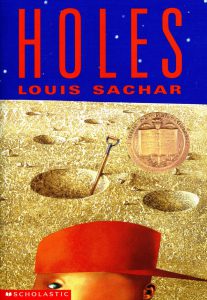After reading “The Story of an Hour” by Kate Chopin and writing a blog about it, I began looking more into the works of the author. I recently discovered another short story title “Regret” written by Kate Chopin, first published in a short story collection A Night in Acadia. This story is one of the most satisfying piece I’ve ever read.
“Regret” is a story of pure, ironic human nature. Humans often tell themselves what they don’t wont or will never do but when those things are presented to them, their entire perspective changes… and suddenly, you realize it’s exactly what you want. So, shortly, I would say the theme of this short story is chiefly realization.
The story begins introducing the main character, Mamzelle Aurlie (which I have no idea how to pronounce). This 50-year-old woman is introduced as an overall strong, sturdy woman who knows exactly what she does not want. “So, she was quite alone in the world, except for her dog Ponto, and the negroes who lived in her cabins and worked her crops, and the fowls, a few cows, a couple of mules, her gun (with which she shot chicken-hawks), and her religion.” Chopin created a visual, emotional, and literal description of Mamzelle in just one sentence, which is very impressive.
The story then transitions to a morning where Mamzelle is observing her new neighbors. Chopin uses the description to reveal how the main character feels about the family. Chopin uses the show don’t tell method very well, almost like it’s just second nature. I appreciate the functions of all the descriptions. None of them feel redundant or out of place. There’s just enough throughout the entire story. On this morning, Mamzelle is presented exactly what she didn’t want. This abrupt introduction changed her routine and at the end, her emotions.
Mamzelle realizes that she’s been missing out on something very special. Her entire life she believed this aspect didn’t belong in her life story, but she was wrong. The title acts as the last emotional element in the story. The main character doesn’t frankly say or describe how she feels, but the ending created a sort of somber. When you look back at the title, you know exactly what Mamzelle Aurlie is feeling while she sat at the table—regret. The ending stirred an emotion inside of me. I almost felt sorry for the main character. I believe that’s exactly what Chopin wanted her readers to feel.
Some interesting things I want to point out is the way Kate Chopin shows her character through her fictional character. Chopin was pro Confederate and obviously racist. Mamzelle describes the slaves working and living across the cotton field. The words negroes and mulatto are used, which was striking to the eye but not so much distracting. I feel I have a very complicated, interested relationship with this author. I know how she felt about my kind, but I can’t help but to appreciate the dynamics of her stories.
Overall, this was a great story. If you want to know what the ‘introduction’ was, click here to give the story a read. It’s very short!

